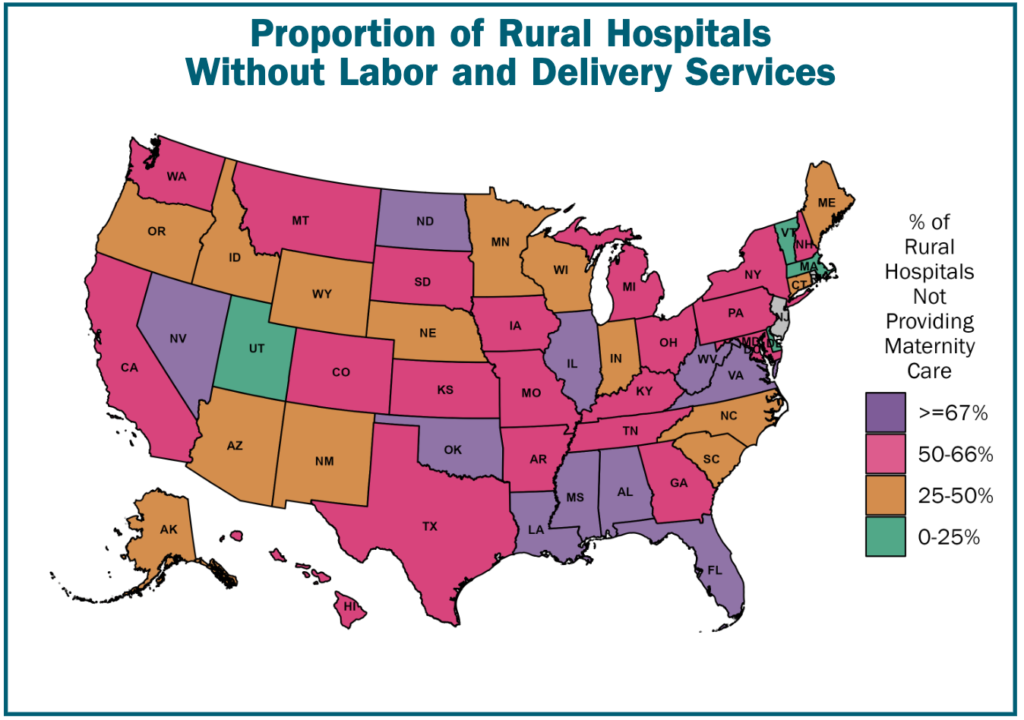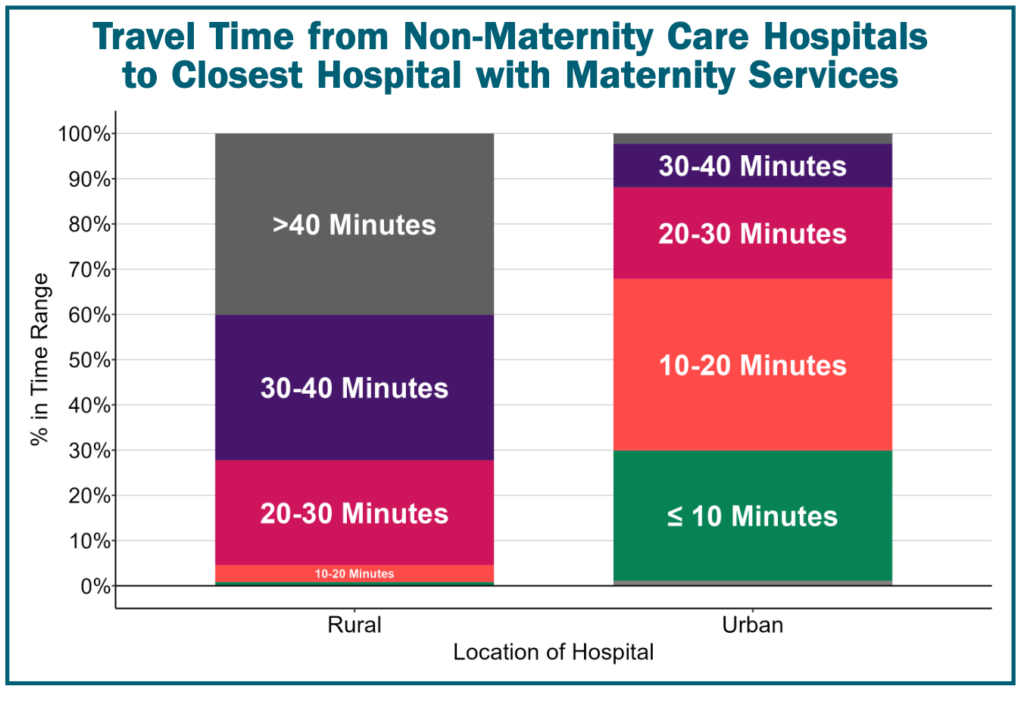That’s in response to an article in JAMA based mostly on a report from the Heart for Healthcare High quality and Cost Reform. The report states:
Greater than half (55%) of the agricultural hospitals within the U.S. don’t supply labor and supply providers, and in 10 states, greater than two-thirds don’t. Over the previous decade, greater than 200 rural hospitals throughout the nation have stopped delivering infants…
In most city areas, the journey time to a hospital with labor and supply providers is underneath 20 minutes, however in rural areas, the journey time is prone to be not less than half-hour, and it’s usually 40 minutes or extra.
https://ruralhospitals.chqpr.org/downloads/Rural_Maternity_Care_Crisis.pdf

The longer journey distances affect not solely entry to care throughout supply, but in addition prenatal and post-natal care.
The absence of native maternity care providers is felt all through the continuum of obstetric care. Sufferers are much less prone to receive ample prenatal or postpartum care providers if they should journey lengthy distances.
“It’s one factor to say the mom has to drive half an hour to ship her child,” Miller stated. “It’s one other factor to say the mom has to drive a half an hour each month to have the ability to get prenatal care. They will’t take time without work of labor, can’t take time away from the children.”
https://jamanetwork.com/journals/jama/fullarticle/2815499

Why are rural hospitals dropping maternity care? Clearly the reply is that reimbursement is way under their value. Furthermore, discovering ample staffing is tough.
Sustaining labor and supply providers requires having physicians and nurses, together with nurse anesthetists or anesthesiologists, who’re skilled and out there across the clock to handle deliveries as wanted. In consequence, funds per beginning which might be ample at a big hospital will not be sufficient to assist maternity care at small rural hospitals with far fewer births.
“We ship about 300 infants a 12 months, so a mean of lower than 1 a day, however you continue to should have OB-GYN protection three hundred and sixty five days a 12 months, 24 hours a day, 7 days per week as a result of infants come always,” Sinek stated in an interview. “It’s costing us $7.5 million proper now to employees our OB unit with nurses that know what they’re doing and CRNAs [certified registered nurse anesthetists] to do anesthesia providers and the workplace employees to assist that care. All of that’s actually including up, and if you happen to don’t ship sufficient infants to cowl these prices, then you definately’re on a downhill course.”…fewer obstetricians and household physicians with obstetric abilities are ready or keen to be on name a number of nights and weekends out of each month…In consequence, hospitals both should make use of or contract with extra physicians or OB-GYN hospitalists.
https://jamanetwork.com/journals/jama/fullarticle/2815499
You may learn the total report right here.